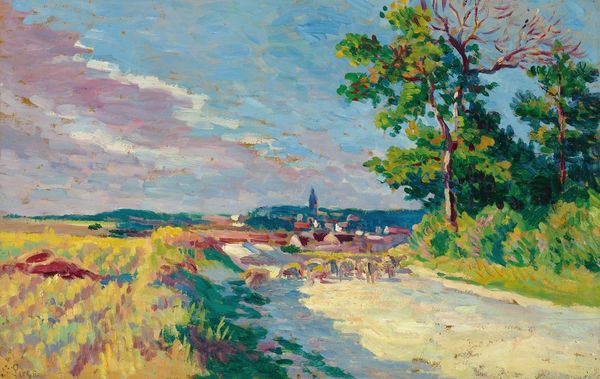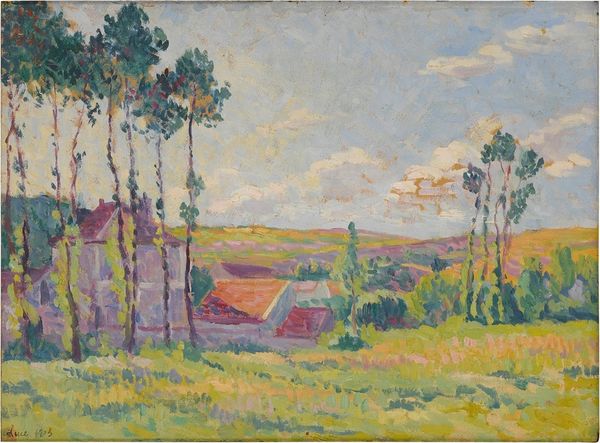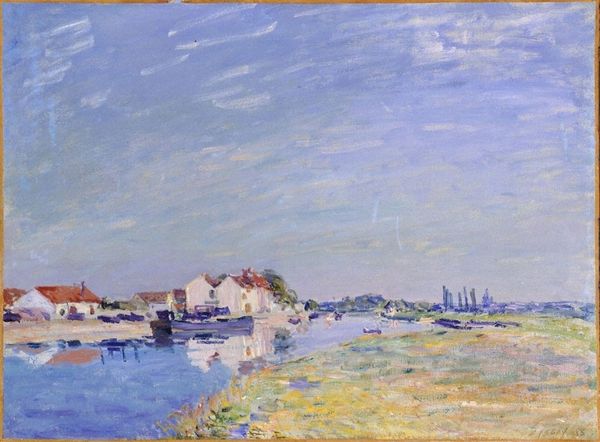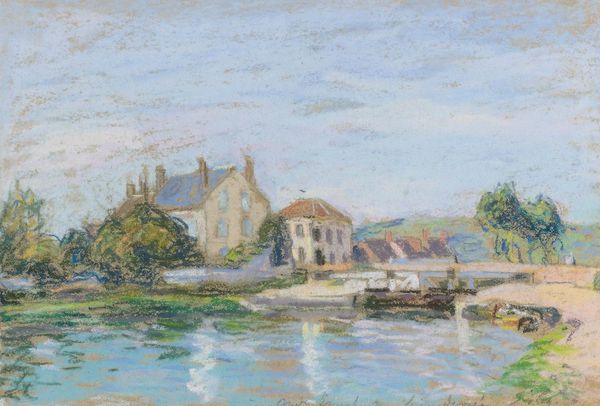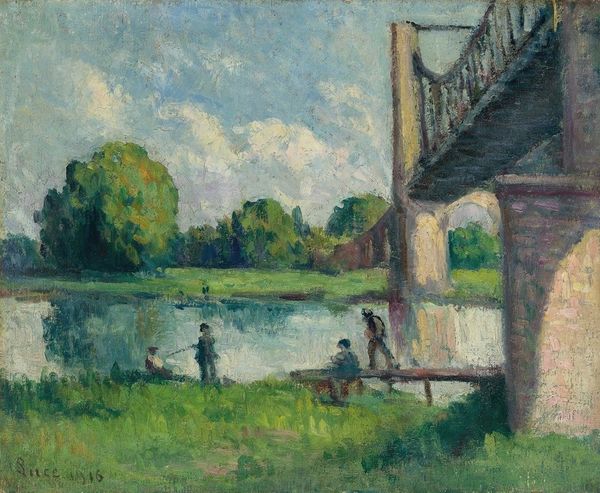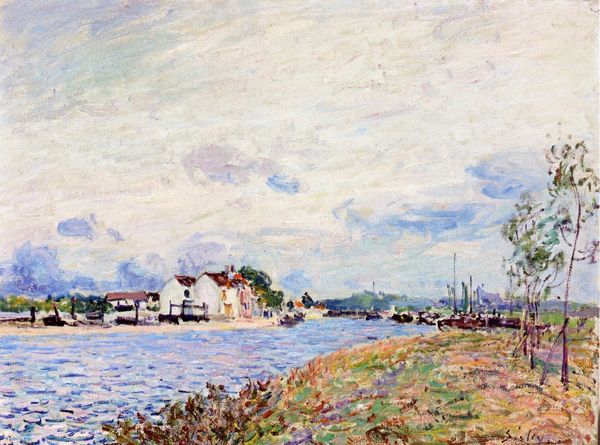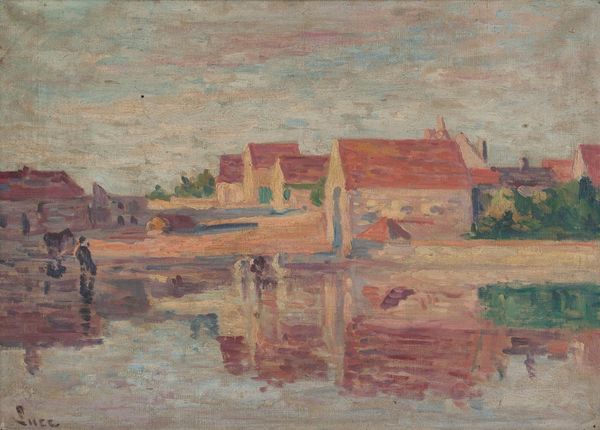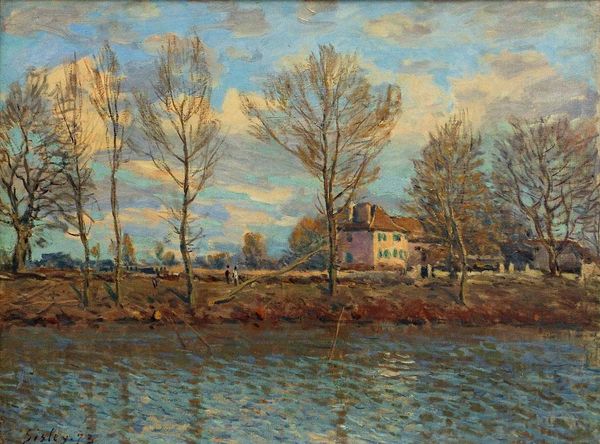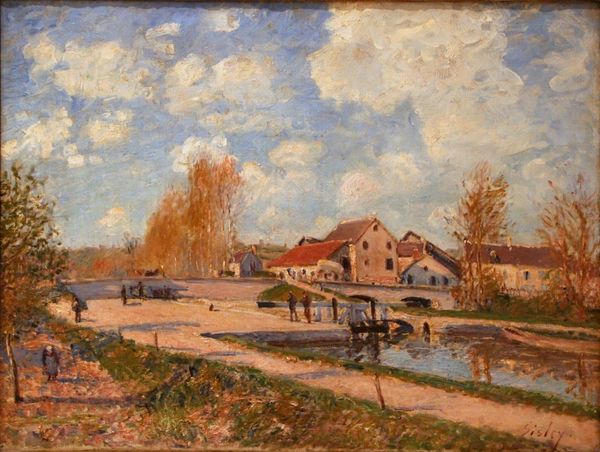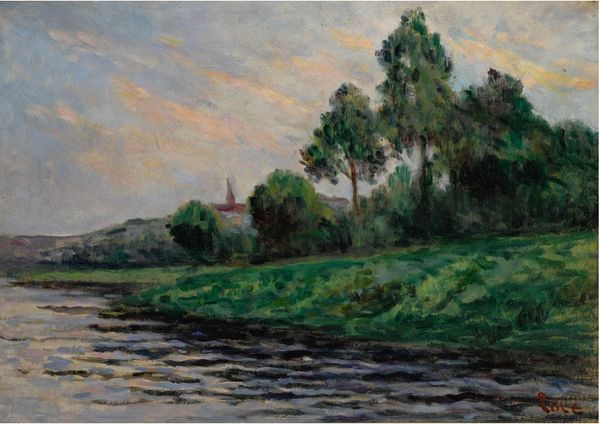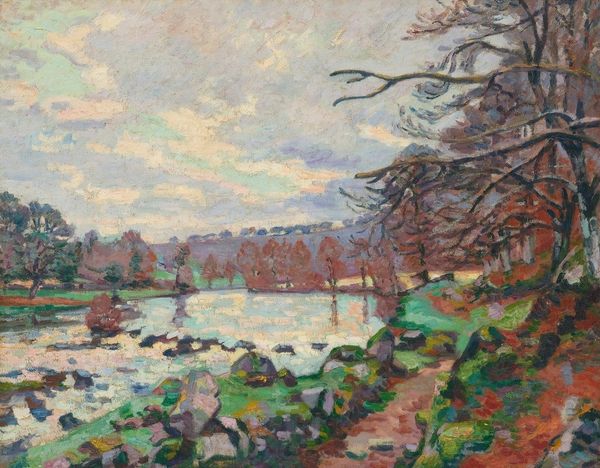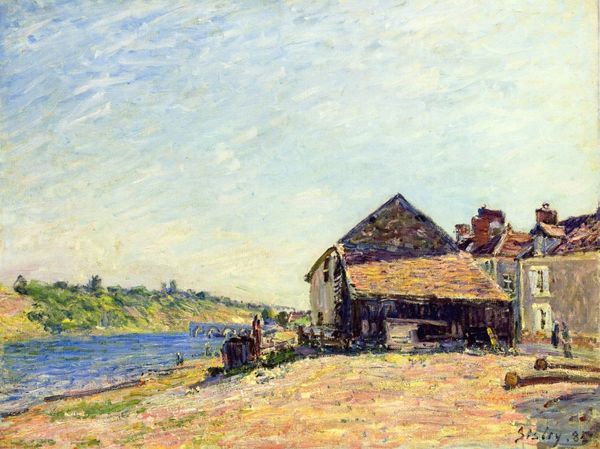
Copyright: Public Domain: Artvee
Editor: Here we have Henri Lebasque's "Péniches Au Bord De La Marne" from 1905, an oil painting that really captures the light on the water. The brushstrokes feel so free, almost like the scene is shimmering. What do you see in this piece, what resonates with you? Curator: Immediately, I'm drawn to the reflections. Notice how Lebasque mirrors the buildings, sky, and even the trees in the Marne. In many cultures, reflections represent a deeper understanding, a truth beyond the surface. Could the artist be hinting at a desire for the viewer to contemplate more than just the beautiful landscape? Editor: That's a fascinating idea. I mostly saw it as a snapshot of daily life, but the idea of seeking a deeper meaning is intriguing. Is that common in Impressionist or Post-Impressionist works? Curator: Indeed. The Post-Impressionists, in particular, moved away from merely capturing a fleeting moment, as the Impressionists did. They imbued their work with emotional and symbolic content. Even something as simple as the specific colours used, like the predominant oranges and yellows here, could suggest warmth, vitality, but perhaps also a touch of melancholy, considering the historical context of pre-war Europe. Editor: Melancholy? I wouldn't have thought of that looking at those colours, but I see your point about pre-war context and meaning. It really adds another layer. Curator: Consider how the barges, or "péniches", were the workhorses of the river, essential for trade and transport. They symbolize labour, movement, and the interconnectedness of society. Lebasque uses visible brushstrokes, thick impasto to depict the water. Do you notice this technique, how does that strike you? Editor: Yes! The texture brings a sense of materiality, the physical reality of the scene. It's not just an illusion. It's a world you could almost touch. I see how he layered those warm colors throughout. Curator: Exactly. Perhaps, then, this painting functions as a potent reminder of simpler times, while subtly hinting at the coming changes that would sweep away the old world order. Editor: I hadn't considered it that way at all. Thanks so much for opening my eyes to those symbolic and cultural layers. Curator: It’s been a pleasure. Each artwork is like a time capsule, filled with stories waiting to be discovered.
Comments
No comments
Be the first to comment and join the conversation on the ultimate creative platform.
